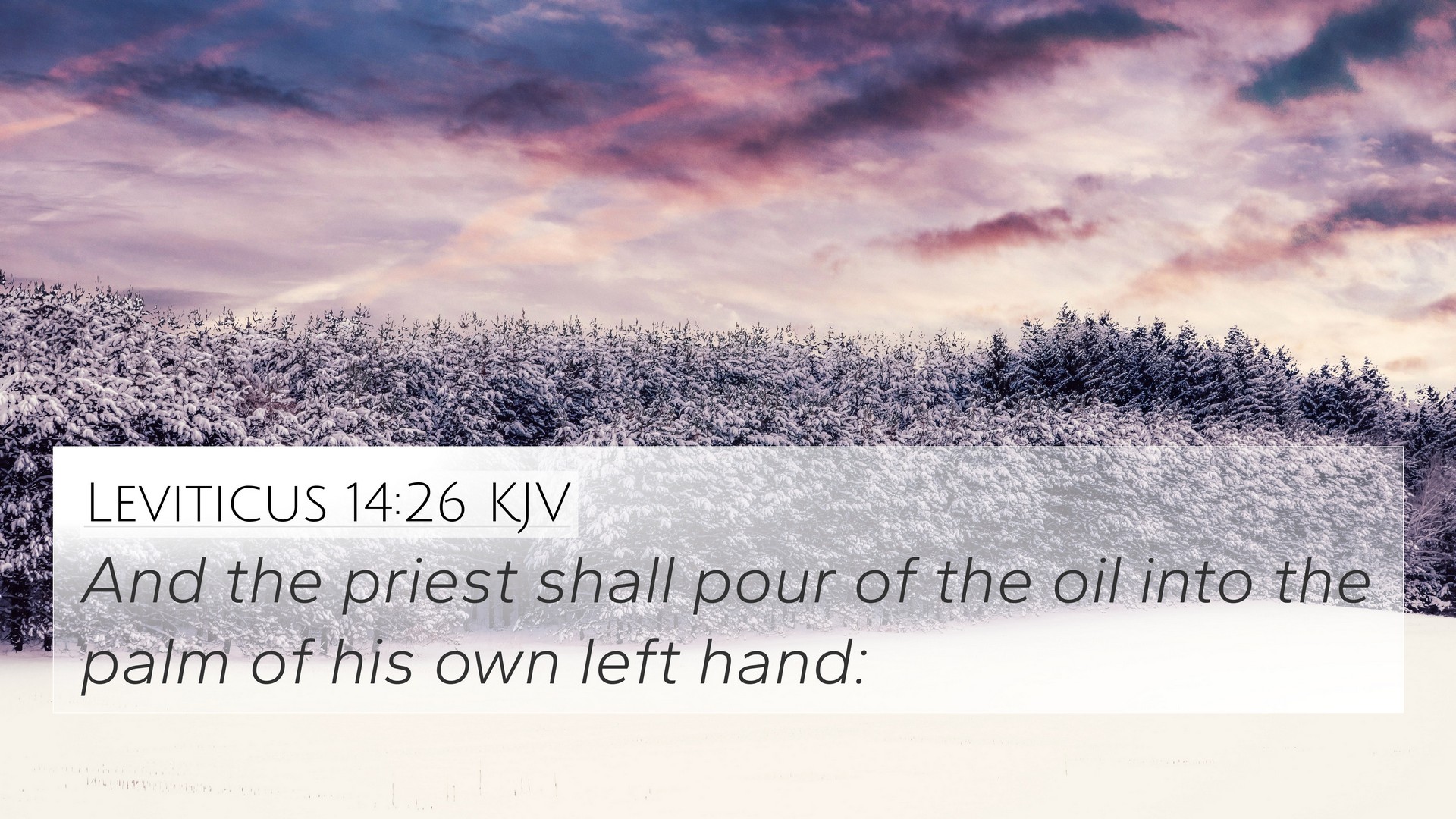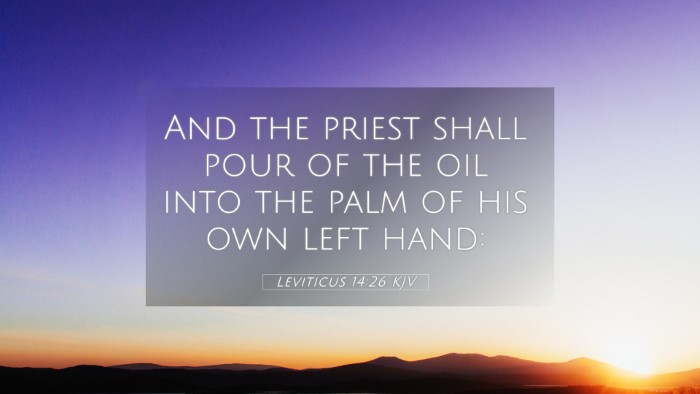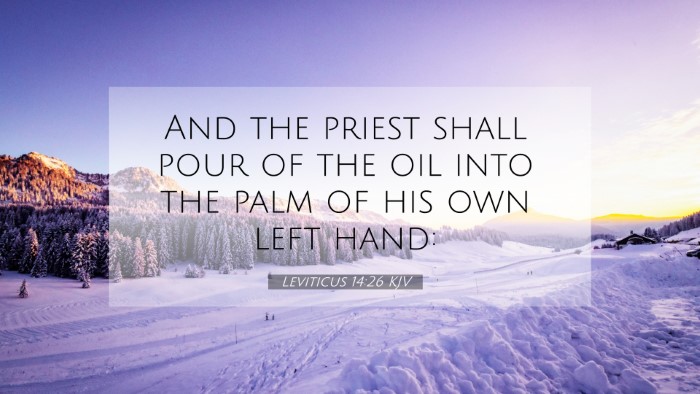Understanding Leviticus 14:26
Leviticus 14:26 reads: "And the priest shall pour of the oil into the palm of his own left hand." This verse is part of the detailed instructions regarding the purification rituals for a leper, illustrating the importance of ritual cleanliness and the role of the priest in mediating between God and the people.
Overview of Leviticus 14:26
This passage highlights the careful procedures required for the ceremony of purification. The priest's action of pouring oil signifies not just physical cleansing, but also spiritual renewal and restoration. It serves as a reminder of the necessary steps taken in biblical worship to approach God with a clean heart.
Commentary Insights
Matthew Henry's Commentary
Henry points out that the pouring of oil reflects the priest's authority and role in the sacrificial system. He emphasizes the symbolic meaning of oil, which represents the Holy Spirit, and signifies consecration and healing. The act draws attention to the necessity of divine assistance in the restoration process.
Albert Barnes' Notes
Barnes elaborates on the significance of the priest's actions, stating that the act of pouring oil into one's hand symbolizes the ministering of God's grace. It conveys the idea that healing and restoration come from God through the appointed means of the priesthood, indicating the seriousness with which God regards purity.
Adam Clarke's Commentary
Clarke offers an analytical perspective on the ritual, discussing the connection between oil and the anointing of kings, priests, and prophets. He highlights that this act demonstrates God's provision and the importance of the priest in transferring the blessing of healing to the leper.
Bible Cross-References
This verse connects with several other scriptures, enabling a deeper understanding through cross-referencing:
- Exodus 30:22-33 - Instructions on making the holy anointing oil.
- Leviticus 14:15 - The role of the priest in the healing process.
- 1 Samuel 16:13 - David’s anointing by Samuel, representing divine selection.
- James 5:14 - Anointing the sick with oil, drawing parallels to healing practices.
- Matthew 10:1 - Jesus empowers His disciples to heal and cast out spirits.
- Luke 4:18 - Jesus’ mission includes healing the brokenhearted and the oppressed.
- Hebrews 9:22 - The significance of blood in atonement and cleansing.
Thematic Connections
The oil signifies more than just physical cleansing; it links various themes throughout Scripture:
- Divine Healing: The connection between leprosy and sin, emphasizing the importance of spiritual healing.
- Consecration: How one is set apart for God’s service, similar to the anointing of leaders.
- Mediation: The priest's role as a mediator points to the ultimate mediator, Jesus Christ.
- The Holy Spirit: Symbolism within the oil connects to the Holy Spirit's work in believers' lives today.
- Community Restoration: The necessity of being restored to community parallels our need for reconciliation with God.
Conclusion
Leviticus 14:26 serves as a profound reminder of the holistic approach to healing within biblical faith. It underlines the essential role of the priesthood and the sacred rituals performed as a means of grace and restoration. By cross-referencing this verse with others, we gain enhanced insights into the overarching themes of healing, consecration, and mediation found throughout the Scriptures.
Tools for Further Study
If you wish to explore further into Bible cross-referencing, consider using the following:
- Bible Concordance: To locate and study interconnected verses easily.
- Bible Cross-Reference Guide: Designed to help understand scriptural links.
- Cross-Reference Bible Study Methods: Techniques that facilitate thematic studies.
- Bible Reference Resources: Compilations of parallel scriptures for focused study.
- Comprehensive Bible Cross-Reference Materials: Utilize resources that offer in-depth analysis.
This rich tapestry of scriptural interconnections illuminates the importance of understanding the Bible not just in isolation, but as a unified work where each verse enhances our grasp of God’s word.


